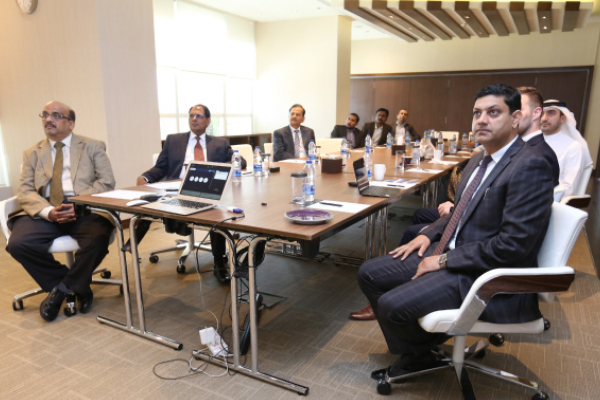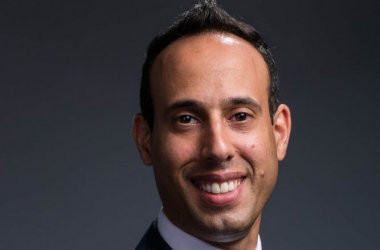In an increasingly digital economy, engagement channels between businesses and customers are gaining in importance and complexity. In association with SafeData, CNME hosted a roundtable discussion on effective strategies for enhancing customer engagement, which sparked a sharp debate amongst a diverse range of regional CIOs.
It’s an interesting time to be a customer. Depending on the product or service being purchased, you may not even need to leave the comfort of your own office. If a problem arises for whatever reason, one can often contact a customer service team through Twitter – or better still, via video link – and solve their gripe in no time. But where is the Middle East in this journey?
Anil Joglekar, Managing Director, CS Infocomm, set the tone for the discussion, and for transitioning customer engagement. “Doctors will always try to diagnose a problem and give medicine x, but, unfortunately in IT, there are too many doctors,” he said. “Companies need to be proactive so that they don’t wait for what customers need. Life is always evolving; certain tech companies who were big several years ago are not there today.”
Ahmed Ebrahim Al Ahmad, Chief Information Officer, Nakheel, said the concept of providing an updated customer engagement strategy was no longer only prevalent in the private sector. “The government is now providing a range of services that mean you no longer have to go to a building in person to complete a request,” he said. “The concept has shifted away from being purely retail-based. Take the University of Wollongong in Dubai – when you access their website, a ‘How can I help you?’ bar pops up and a physical person can answer your typed questions. Ultimately, when it comes to customer engagement, ROI is intangible as it relates to customer satisfaction.”
M.N. Chaturvedi, Director of IT, Oasis Investment Company, saw the importance of omnichannel in a dynamic, customer-driven market. “It can be a game-changer as long as the infrastructure is safe and sound,” he said. “Our group has an engineering focus. To us, omnichannel means having in-bound contact service centres; if failures result it’s used for calls.”
Chaturvedi continued by adding that omnichannel was becoming an increasing necessity for more customer-focused industries. “All business that are customer-related require more solutions,” he said. “All overlay has to be business driven, and during periods of growth, companies need technology improvements to continually engage customers.”
Prasanth Venugopal, IT Manager, Deyaar Development, highlighted the necessity of important insight in making IT spending decisions at the right time, “It’s difficult for IT departments to always keep up with the pace of technology, and knowing exactly what customers want at any point in time,” he said. “What’s really important is the ability to assess your own resources when making a decision to make an upgrade.”
Shrikant A. Kabboor, Senior Director, Information Technology, Emaar Properties, weighed in on the discussion by adding that certain channels of communication were becoming increasingly important, but only with the right IT infrastructure would they correctly serve their purpose. “We have no intention of covering all channels,” he said. “It’s important to capture customer preferences through social and sentiment analyses, but I believe it isn’t an issue of computing predictive analytics, and that it’s more a question of behavioural analysis. When used properly, video and social both improve customer retention and loyalty, and are unavoidable.”
Kumar Prasoon, Chief Information Officer, Al Safeer Group, described the company’s plans to keep in touch with customers in real-time. “We’re trying to ensure that every element of retail is linked to the customer,” he said. “Customer engagement is all about the details of a customer mindmap. We’re planning a retail GPS solution that allows customers to engage with the store directly, allowing us to think about how loyalty impacts their spending habits.”
Rose Anwar, Former CIO, ME Global International, drew attention to the importance of vendors and IT decision makers alike appreciating the nuances of the Middle Eastern market. “The culture here is different from the US, and different business processes need to be kept in mind,” she said. “Every company needs to customise their solutions depending on their market. It’s important to be able to recognise what is trending, engagement levels and satisfaction so that companies can employ the right tech at the right time.”
She also chose to highlight the importance of robust infrastructure in service provision. “When the infrastructure is bad, these types of solutions are not sustainable,” she said.
Thameem Rizvon, IT Director, Kamal Osman Jamjoom Group, echoed Anwar’s sentiments, “Omnichannel is a huge opportunity, but in many ways it is still confusing,” he said. “It doesn’t really matter what is happening in other markets like the US. In 2008 we attempted to go online with e-commerce stores, and the number of months it was employed outweighed the customers we actually received in that time. In the U.K. for example, 30 percent of John Lewis’ business is now done via e-commerce, but here it is still a challenge.
“As a company we are ready for omnichannel, we have the resources in place but customers still prefer to go to the stores in person. Uptake will take time.” D.P. Sangal, Founding Partner and Managing Director, SafeData Middle East, presided over the discussion.





